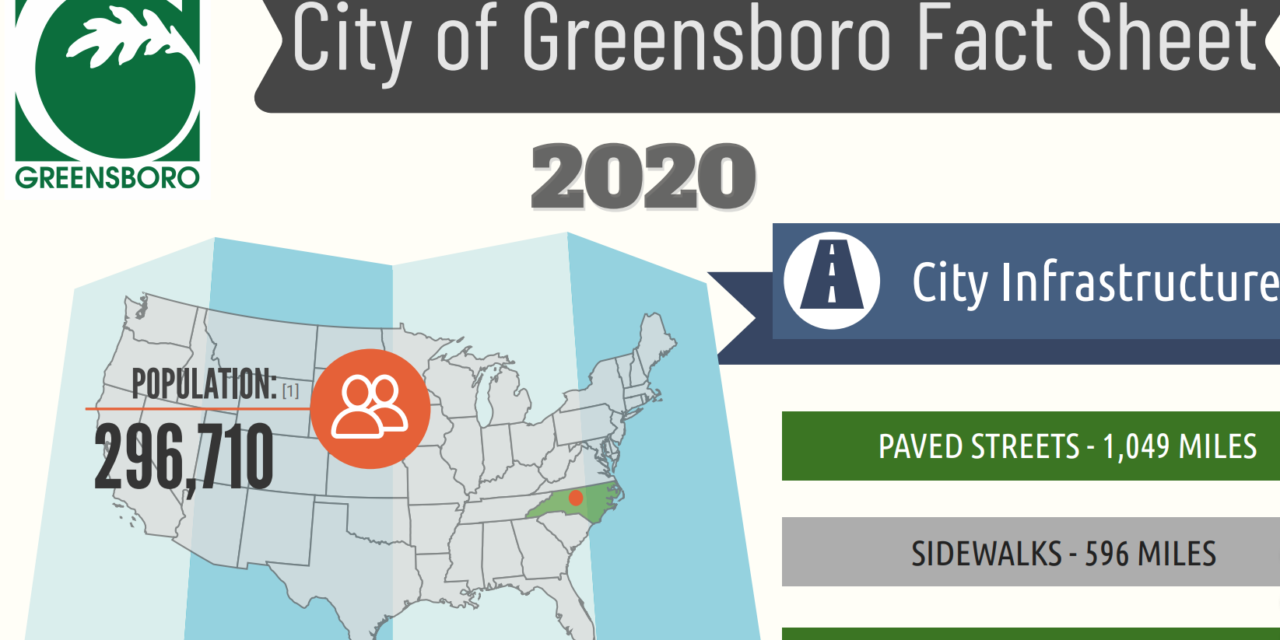Greensboro is not quite at a population of 300,000 according to the City Fact Sheet released by the Greensboro Planning Department.
The Planning Department is using the 2020 estimate from the US Census Bureau, so if people make a point of getting counted in the 2020 Census, Greensboro might officially make it over the 300,000 mark when the Census figures are reported.
The fact sheet is full of fun facts that are hard to find anywhere else, and also difficult to bring up in polite conversation, such as that Greensboro has 1,049 miles of paved streets. Not listed on the fact sheet is that according to a study done in 2012 the city has two miles of unpaved streets.
Greensboro also has 596 miles of sidewalks, which would seem to indicate that about half the streets in Greensboro have sidewalks, but since the Greensboro City Council prefers to put sidewalks down both sides of a street that percentage is reduced considerably.
Along with the 596 miles of sidewalks, the city has 100 miles of trails and greenways.
Greensboro has 25 fire stations and 13,078 fire hydrants.
And as for infrastructure you don’t see, but you do pay for, the city has 1,837 miles of water lines and 1,656 miles of sewer lines. And to make sure you do pay for those lines, it has 103,273 water meters.
According to the Planning Department, the city budget is $602 million, but according to the Budget and Evaluation Department it is $612 million. But what’s $10 million between friends.
The property tax rate in Greensboro is 0.6625 cents per $100 of property valuation, which is the highest property tax rate of any comparable city in the state. But property taxes only make up about 25 percent of the total budget while fees make up about 29 percent.
The city allocates 62.06 cents of property tax revenue to the general fund, 3.5 cents to transit (aka the bus system, which doesn’t cover all the costs) and 0.69 cents to the Housing Partnership fund.
The fact sheet doesn’t mention this but City Council talks about jobs and the need for economic development but, in the 2020-2021 budget, the council eliminated the 0.5 cents of property tax revenue that went to the economic development fund while at the same time increasing the amount of revenue to the bus system from sales tax revenue.


Isn’t the term “Planning Dept” an oxymoron? Or izzit about those in the dept?
Kripple the Koop
They read your comment and abolished the Planning Department. That should make you happy!!
Feliz-a-mundo.